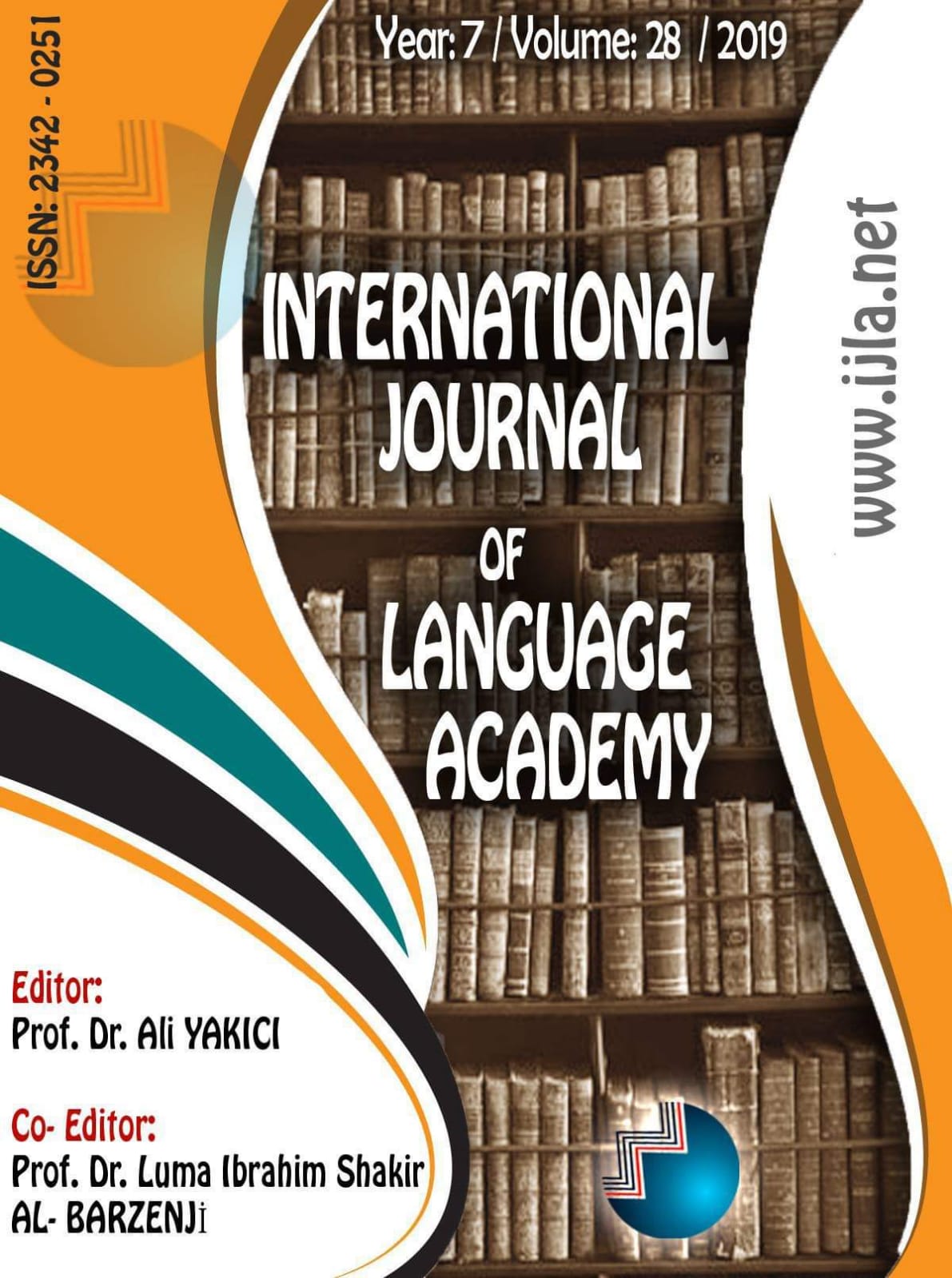Author :
Abstract
This study attempts to approach the ‘absent’ in the text by reading the visual representations and their stylistics patterns embedded in a poem by the poet Zuhair Ibn Abi Sulma, in which he laments Haram ibn Sinan The study is based on clarifying the poetic dimensions and their parallel contexts on binary patterns transformed in space, time and human as forming elements in the construction of the determinants of the pre-Islamic poem and creating its aesthetic, existential and semantic composition. Starting with the manifestations of the ruins and their living elements and the transformations of their anti-patterns from death and annihilation to life and survival, from separation and erasure to connection and stability, from silence and drought to movement , construction and fertile breeding and its resurgence within the poet's obsession to challenge existence and restructuring it in symbolic manifestations.Then moving to absent manifestations of chivalry, and evoking absent lamented in his deeds and existence within a controversy of leave and stay, and the emergence of the act of time and conflicts within the dual capacity and inability represented by the manifestation of time and its effective dominance against the disabled and incapacitated man. Therefore, the speaker adopted the ideal manifestation in the form of the lamented that is corresponding to the elements of natural presence in invoking the beauty and seizing its symbolic manifestations of the absent and to transmit life in it in praising forms that manifests its existence, which is combined with the manifestation of the poetic-self to overcome the psychological defeat by replacing strength with weakness, and happiness with pain. In order to achieve the objective of this study, the researcher has to describe the textual phenomena and explore the covert and absent from the present manifested in various forms and clarify the covert semantic patterns, relying on the integrative methodological data in reading and understanding the literary texts.
Keywords
Abstract
This study attempts to approach the ‘absent’ in the text by reading the visual representations and their stylistics patterns embedded in a poem by the poet Zuhair Ibn Abi Sulma, in which he laments Haram ibn Sinan The study is based on clarifying the poetic dimensions and their parallel contexts on binary patterns transformed in space, time and human as forming elements in the construction of the determinants of the pre-Islamic poem and creating its aesthetic, existential and semantic composition. Starting with the manifestations of the ruins and their living elements and the transformations of their anti-patterns from death and annihilation to life and survival, from separation and erasure to connection and stability, from silence and drought to movement , construction and fertile breeding and its resurgence within the poet's obsession to challenge existence and restructuring it in symbolic manifestations.Then moving to absent manifestations of chivalry, and evoking absent lamented in his deeds and existence within a controversy of leave and stay, and the emergence of the act of time and conflicts within the dual capacity and inability represented by the manifestation of time and its effective dominance against the disabled and incapacitated man. Therefore, the speaker adopted the ideal manifestation in the form of the lamented that is corresponding to the elements of natural presence in invoking the beauty and seizing its symbolic manifestations of the absent and to transmit life in it in praising forms that manifests its existence, which is combined with the manifestation of the poetic-self to overcome the psychological defeat by replacing strength with weakness, and happiness with pain. In order to achieve the objective of this study, the researcher has to describe the textual phenomena and explore the covert and absent from the present manifested in various forms and clarify the covert semantic patterns, relying on the integrative methodological data in reading and understanding the literary texts.





